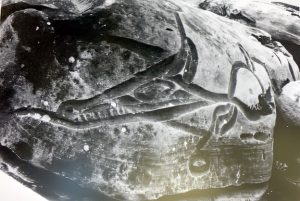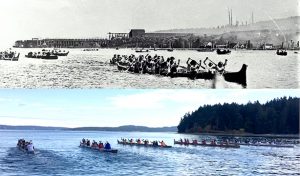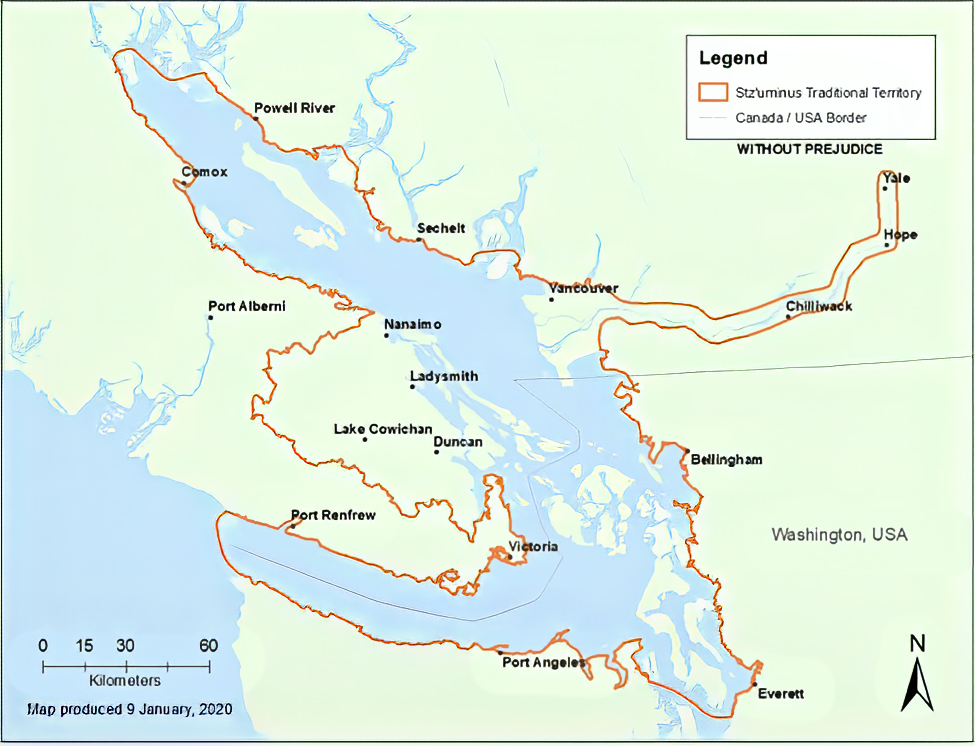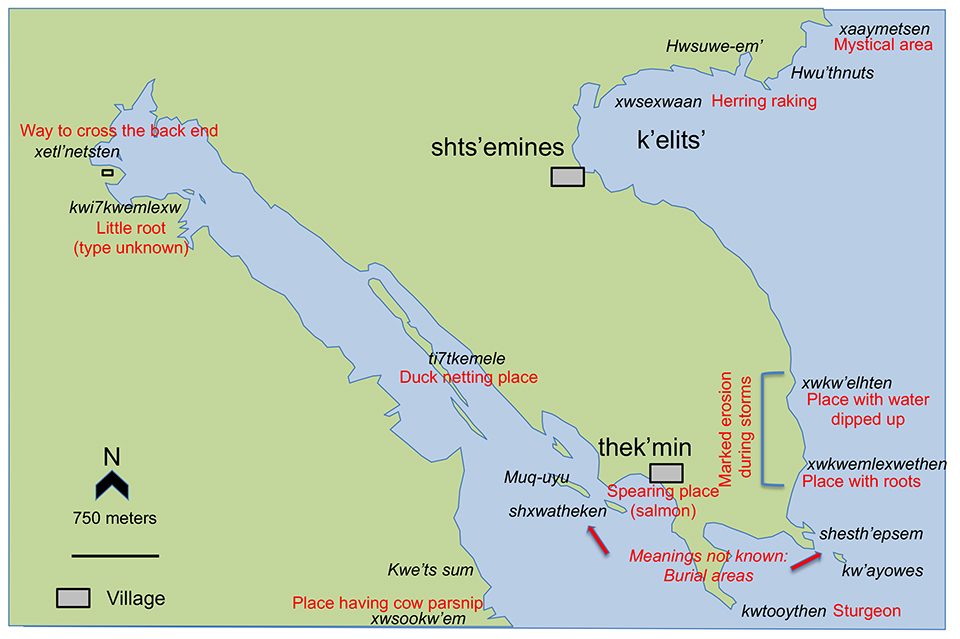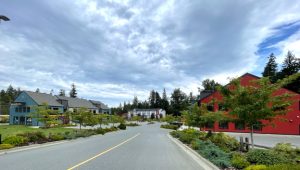The First Nation
The Stz’uminus First Nation, a Coast Salish people speaking a Coast Salish language, Hul’qumi’num, have occupied the area in and around Ladysmith Harbour for several thousand years.
Stz’uminus traditional territory spans the Salish Sea between Vancouver Island and the British Columbia Lower Mainland, includes much of southern Vancouver Island and extends up the valley of the Fraser River from Vancouver to Yale. Occupying winter villages on the sunny south-facing east shore of the harbour at Thuq’min (the English name of which is Shell Beach) and at nearby Q’ul’its’ (Kulleet Bay), the people paddled in dugout cedar canoes from Vancouver Island across the Salish Sea to visit relatives and to harvest the seasonal Fraser River salmon runs. The nation has a strong cultural connection to the sea from which much traditional food comes; fishing and clam gathering are particularly important traditional activities.
Music plays important spiritual and social roles in Stz’uminus culture. Their songs reflect a deep connection to a maritime way of life, the natural and the spirit worlds, celebrate life events, and also can be for fun! Traditionally, hand drumming on deer hide is accompanied by singing or chanting by a single person or multiple persons in unison. Some songs belong to individual families and are used for private ceremonial purposes; others are widely sung. Songs in Hul’qumi’num continue to be composed today and reflect the continuation of an age-old cultural tradition of music.
Canoe Song was performed and explained by Clinton Charlie on how it was used to introduce travellers going through different territories to other First Nation bands. Interview starts at 1m.49s. (captions are available in English and French). Enjoy this video with a transcript (EN)
The 1300 members of the Stz’uminus First Nation welcome you on your virtual visit to their traditional territory.
Uy’ skweyul si’em nu sye’yu ‘uy’ kwunus ‘i’lumnamu.
Good day my respected friend, It is good to see you.


